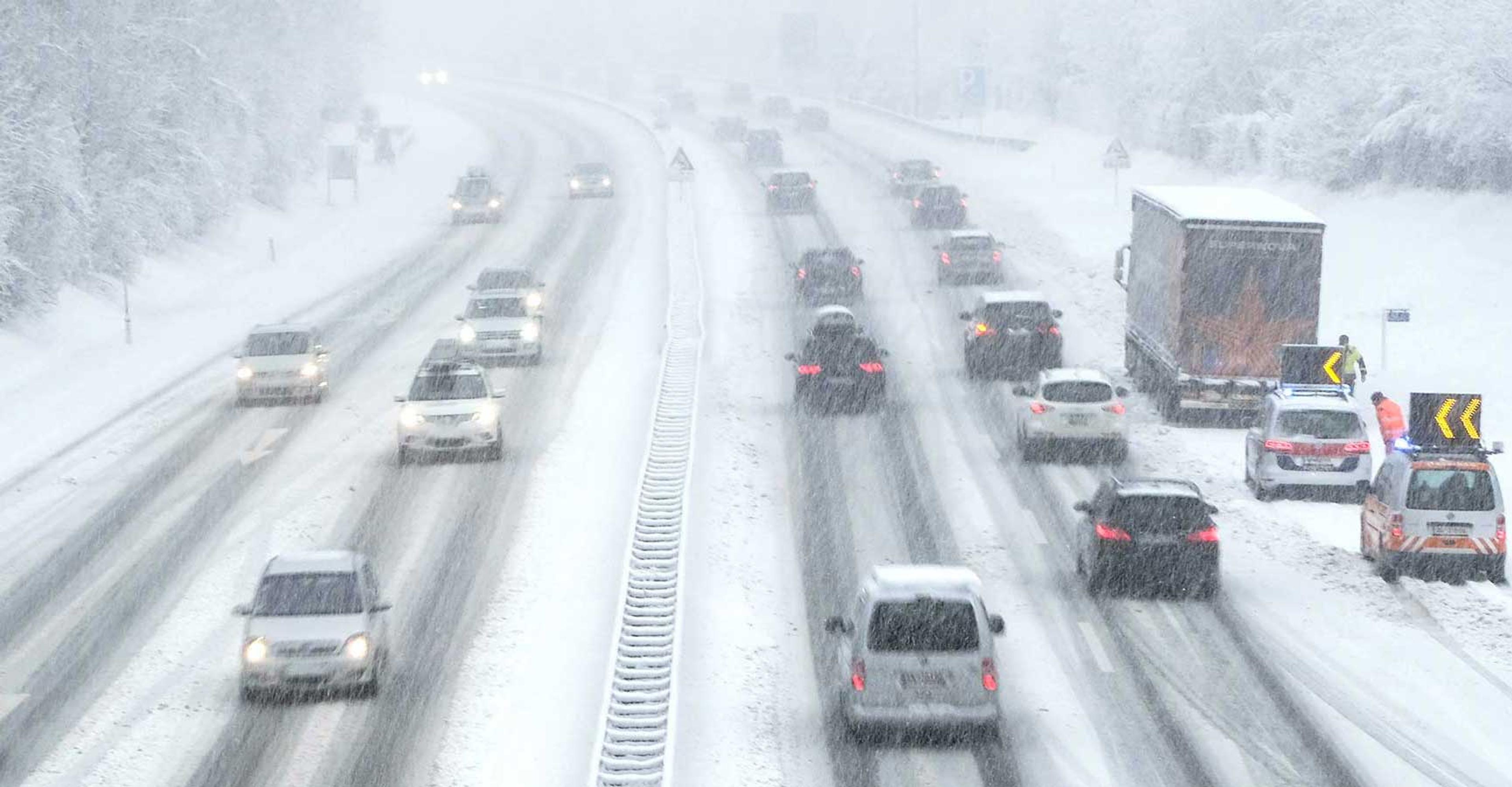
Top 10 winter driving tips for truck drivers
The winter months can be brutal, and driving in such conditions can be especially challenging for CDL A semi-truck drivers. With 156,164 crashes and 1,300 fatalities due to snowy and icy road conditions, prioritizing safety is critical. There are many ways to make winter driving less dangerous and stressful. Here are the top winter driving tips every truck driver should follow:
1. Pre-trip Inspections are Crucial for Safety!
Performing a thorough pre-trip inspection before every shift is especially important during winter weather. Make sure to:
- Check that all the lights are working properly.
- Inspect the brakes.
- Pay attention to coolant and antifreeze levels.
- Ensure windshield wipers and washer fluid are in good condition.
- Consider using winter tires or snow tires during these months.
- Examine tires, tire pressure, and tire chains.
- Verify weather conditions through the National Weather Service.
- Confirm that you have an ice scraper on hand.
It's essential for truck drivers to familiarize themselves with their vehicle’s equipment before hitting the road. Understanding features like the switch panel for the inter-axle lock, heated mirrors, and environmental controls can significantly reduce distractions while driving. Taking a few minutes to review these systems can help prevent incidents or accidents caused by distracted behavior. Prioritizing this practice not only enhances safety but also contributes to a more efficient journey
2. Clean Ice and Snow off Mirrors, Windows, and Lights
Make sure your windshield, windows, mirrors, and lights are completely free of ice and snow. It’s not only about your ability to see the road; other drivers also need to see your brake lights to react appropriately. Taking the time to clear these areas can greatly improve safety for you and everyone around you.
3. Be Cautious on Bridges
Bridges tend to freeze before other surfaces and remain icy longer. Approach bridges with caution and avoid sudden actions like braking, changing lanes, or accelerating. These can lead to dangerous slips or slides. Slow and steady driving is key when crossing icy bridges.
4. Stay Aware of Snowplows and Practice Snowplow Safety
During the winter months, snowplows play a critical role in keeping roads clear. However, they can also present potential hazards if you're not vigilant. It’s important to maintain a safe distance from snowplows, as they often travel slower than other vehicles and may make sudden stops or turns. Avoid passing snowplows on the right, as their blades can extend beyond the truck, and visibility around them is often limited.
By practicing snowplow safety, you reduce the risk of collisions and help ensure safer road conditions for yourself and the snowplow operators. Always stay alert to where snowplows are operating and adjust your driving accordingly.
5. Maintain a Safe Following Distance
In snowy and icy conditions, your ability to stop is greatly reduced. How much stopping distance will you need? On snow-covered roads, it can take up to 10 times longer to stop when driving on snowy roads. Always maintain at least a 15-second following distance to give yourself enough time to react if the vehicle ahead stops suddenly. Be prepared to adjust to changing road conditions and always keep an exit route in mind.
6. Avoid Driving in Ruts Left by Other Vehicles
While maintaining a safe following distance, also be mindful of your wheel position. Avoid driving in the ruts left by vehicles in front of you, as these areas can have packed snow and ice, which increases the risk of losing control.
7. Brake Early and Accelerate Gradually
Cold weather and wet roads often lead to icy intersections. To stay safe, begin braking slowly and earlier than usual when approaching stop signs or red lights. Avoid hard braking and accelerate gradually to prevent losing control, especially on slick surfaces. These adjustments help prevent jackknife accidents and give you more control in winter driving conditions.
8. Slow down
One of the most effective ways to stay safe in winter driving is to simply slow down. Higher speeds reduce traction, making it harder to maintain control of your truck. By lowering your speed, you can improve traction and enhance overall safety.
9. Turn Off the Engine Brake
In wet or slippery conditions, using your engine brake can cause your drive wheels to lose traction. To prevent your truck from sliding out of control, it’s essential to turn off the engine brake when road conditions are less than ideal.
10. Practice Defensive Driving
Defensive driving is about anticipating potential hazards and reacting appropriately. In winter conditions, this means being hyper-aware of your surroundings and other drivers. If road conditions feel unsafe, don’t hesitate to pull over and wait for conditions to improve. Communicate your decision with your operations team or customers to ensure safety is always the top priority.
One of the most important winter driving tips is to remember that you, the driver, are in control of your safety. If conditions become too hazardous, make the decision to pull over and wait for safer conditions. Always communicate this decision clearly and remember that safety should always come first.
Practice these essential winter driving tips to navigate the challenging conditions ahead and stay safe on the road.



